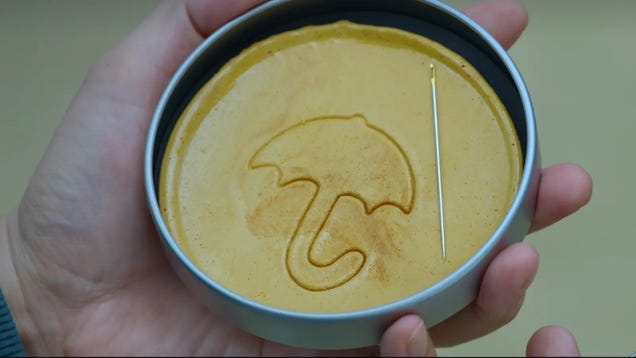Latest News HighLights

9 Times Squid Game Used Food to Tell a Bigger Story
Since its debut in 2021, the hit Netflix series has given people around the world hours of entertainment and more than a few cool . The show also offers a scathing and resonant critique of the capitalist system in which we all live, one with a vast divide between the comfortable rich and the desperate underclass willing to do anything for cash, including (as the show proffers) take part in a deadly series of . But it’s not just the colorful sets and extensive gore that make an eerie watch. The tone is also established through the food and drinks consumed throughout the series, as different items convey each character’s status and the gulf that exists between them. Here are nine times when deepened its storytelling with food. , and we’re choosing to interpret certain points of the series in a way that might diverge from writer/director Hwang Dong-hyuk’s intention. Ready? Green light... The first episode uses food as shorthand for the lower-class status of main character Seong Gi-hun (Lee Jung-jae). For his daughter’s birthday, Gi-hun treats her to a dinner of affordable : tteokbokki, or rice cakes in spicy sauce. “I wanted to buy you something more delicious,” Gi-hun says, as his daughter responds by telling him about the steakhouse her mom and stepdad took her to. Seeing that this leaves her dad even more downtrodden, she assures him that the tteokbokki is actually even better, because it’s “junk food” she normally isn’t allowed to have. The inherent divide of street food and steakhouses, the use of “junk food” as a term that implies “lowlier” fare—in the opening episode, tteokbokki embodies the distinct separation of classes that will soon be made starkly more evident in the games. Gi-hun, along with 455 other competitors, has agreed to enter the mysterious game that promises a huge cash prize. The first meal they are served in their barracks is a box containing rice, kimchi, vegetables, and a fried egg, which they receive in a formation that evokes the image of a bread line. It’s a no-frills meal designed to nourish players just enough so they can get through subsequent challenges, and the food evokes different memories for different players. The food is uniformly distributed, served in uniform metal boxes. The players themselves are seen as uniform components of the game (many underappreciated workers out there can relate), and there is not even the option of obtaining more than what is handed down by the powers that be. The fact that the rice isn’t heated just shows how low the players are on the totem pole, not even a basic effort is made to make their food more enjoyable. The main subplot of ’s first season concerns Detective Hwang Jun-ho (Wi Ha-jun) posing as one of the game’s masked guards in order to infiltrate the game and search for his missing brother. Through Jun-ho, the audience gets some insight into the life of the guards when they’re not terrorizing the players. It’s revealed that the guards with Circle uniforms aren’t actually much better off than their charges: Their rooms are tiny, they are bound by strict schedules, and their meals are only slightly more substantial than what we see players eating. Circles don’t even get the fried egg. The tray from which Jun-ho eats resembles an archetypal prison cafeteria tray, and it’s delivered to him as such, through a hole in his door. Everyone is a prisoner within an unfair system. Like George Carlin said, the elites are “a big club, and you ain’t in it.” And as Jun-ho’s sparse meal illustrates, even the other people you assume are in the club without you ain’t in it. On the morning of the second challenge, players are given a bun and a small bottle of milk for breakfast. This bun, according to the , is known as soboro and has a crumbly peanut topping. According to , this bun and milk combination is frequently given as a snack to kids in school (which Gi-hun also references). Serving it to players can be seen as an attempt to infantilize them, reiterating how far beneath the ruling class they are. Also, notice how paltry this meal is compared to the previous one. The players are intentionally given less and less food, to manipulate their behavior. Food (or the lack of it) can be used as a means of controlling the population. A year after the pandemic introduces the world to , introduced North American audiences to that gave the coffee its name. Popular in South Korea, dalgona candy is made out of baking soda and melted sugar, forming a puffy but brittle disk of sweet confection that you can press shapes into. It’s also in which each player must perfectly carve said shape out of a piece of dalgona or be shot to death. Fun! Every game throughout the series illustrates how the exploited class cannot afford to make even the slightest mistake. But in the dalgona challenge specifically, Gi-hun’s solution to the game—to lick the sugar from the back so it melts along the shape’s perforation—looks particularly dehumanizing, as all the players take up the strategy and seem more like they’re lapping up water. Corn (Episode 5) Corn (Episode 5) The third round sees the players undertake a grueling game of tug-of-war in which half of the competitors end up falling to their deaths. But at least the survivors are treated to a generous post-game meal: corn on the cob. At several points, the show alludes to the players being akin to racehorses: fiercely competing against each other while higher-ups watch and bet on them. The corn is much like the carrot given to a horse who has done a good job. Interestingly, Gi-hun himself bets on a horse race in the first episode, complicit in a similar exploitation of living beings, and his debt is what motivates him to join the game in the first place. Top-shelf booze (Episode 7) Top-shelf booze (Episode 7) What’s more horrifying than watching underprivileged people play deadly children’s games? Getting a glimpse of the people who enjoy watching the carnage and betting on it. A gaggle of depraved douches known as the “VIPs” arrive at the mysterious venue to watch the games take place. They do so from a comfortable lounge area while sipping on wine and scotch through golden masks that conceal their identity. We hardly have to belabor the point here, as isn’t exactly subtle about these characters. Top-shelf booze is the perfect delineation between the haves vs. the have-nots. Steak dinner (Episode 8) Steak dinner (Episode 8) And then there were three. The trio of remaining players in the game (Gi-hun, Sang-woo, and Sae-byeok) are treated to a lavish dinner in a setting that looks like a Morton’s The Steakouse owned and operated by Tim Burton. Their meal consists of a juicy steak, several side dishes, and red wine, all served by the guards. It looks delicious, perhaps deserving of a place on , but the weary trio are too far gone to savor it. They have only death and winning on their minds. The three players have risen to elite status—even outfitted in tuxedos to eat their meal—but the horrific deeds they’ve done to get there make it a hollow victory, to say the least. Gi-hun emerges from the game victorious and with billions of won in the bank, but he doesn’t spend any of it. Still traumatized by the ordeal, Gi-hun is practically unresponsive during a meeting with his banker and can’t even bring himself to accept the cup of coffee that is offered to him. The coffee is a reflection of all that Gi-hun now has access to but isn’t claiming as his own. Ultimately, the only antidote to his broken misery is using the money to help the loved ones of people who were killed in the game, which doesn’t involve sitting around sipping espresso.
Publish Date : 2023-10-27 14:30:00
Image and News Source : thetakeout

